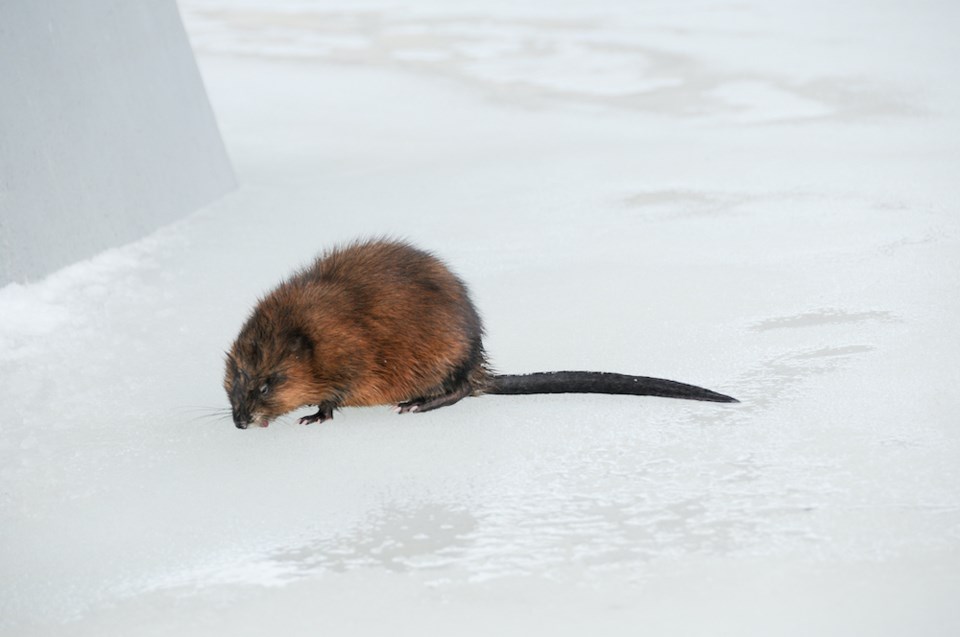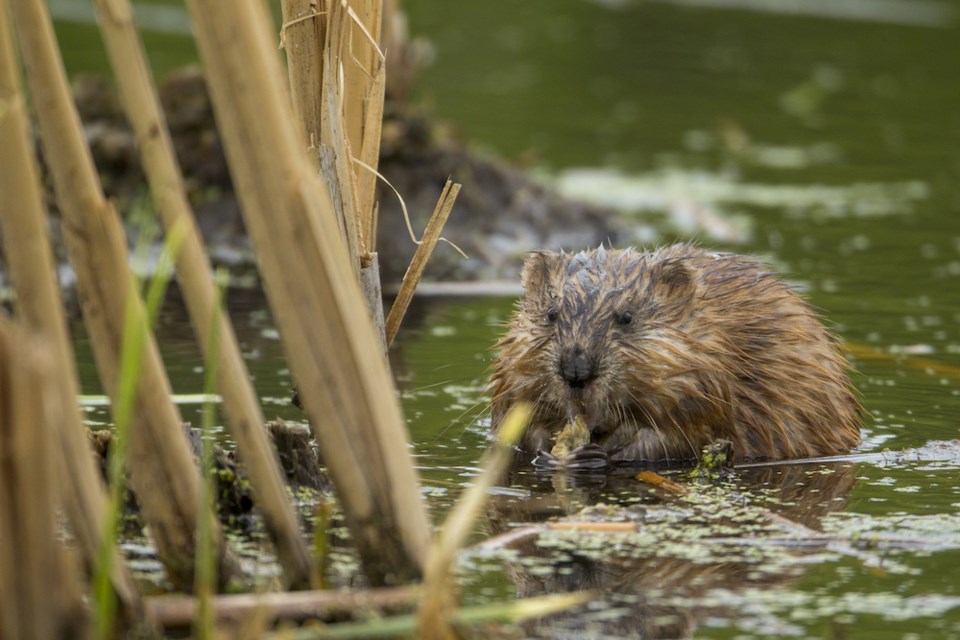Have you ever seen a small beaver somewhere in Metro Vancouver?
If you didn't get a close look, it might not have been a beaver.
Muskrats (Ondatra zibethicus) look strikingly similar to beavers, albeit smaller and with some notable differences.
Megan Manes, Public Environmental Educator at the Stanley Park Ecology Society (SPES), tells Vancouver Is Awesome that the two animals share a great deal in common but there are ways to tell them apart.
While they are both brown, semi-aquatic rodents, the SPES conservation technician noted that their tails are completely different. Beavers have wide, flat tails, while muskrats have thin, tapering tails. Also, beavers are larger and have more prominent ears.
 Beavers have wide, flat tails, while muskrats have thin, tapering tails. Photo via carlosbezz / Getty Images
Beavers have wide, flat tails, while muskrats have thin, tapering tails. Photo via carlosbezz / Getty ImagesMuskrats don't build dams — but they do build domes
Aside from their appearance, the rodents also share a striking behavioural difference. Beavers build dams, muskrats don't.
As winter approaches, muskrats build domes out of frozen vegetation to cover holes in the ice, explains the Alberta Institute for Wildlife Conservation. "These miniature lodges are used as resting places during underwater forays and as feeding stations."
Both beavers and muskrats are adept in the water and can hold their breath for an impressive amount of time. Additionally, both animals' teeth stick out in front of their lips so they can chew underwater without swallowing gulps of it.
According to the SPES records, muskrats have been spotted in Stanley Park prior to 1979. Although they are seldom seen in Stanley Park, when they have been spotted it has been near Beaver Lake.
A Summary of Historical and Current Occurrence Records notes that muskrats are found "present in Jericho Park, golf course ponds in Southlands area, and Beaver Lake." They were also observed at the mouth of Spanish Bank Creek and were considered abundant everywhere along the lower Fraser River.
These beavers came to a Stanley Park lake after a 60-year hiatus
Known for building large dams, lodges, and canals, you're more likely to see evidence of beavers than you are to spot one of the large rodents. So, when the first beaver was spotted in Stanley Park's Beaver Lake in over 60 years, it made a considerable splash.
In 2008, the first semi-aquatic herbivore mysteriously appeared in Beaver Lake after an extraordinary hiatus. No one knows how it got there, but a second one joined it in 2011. Afterward, the pair had kits.



